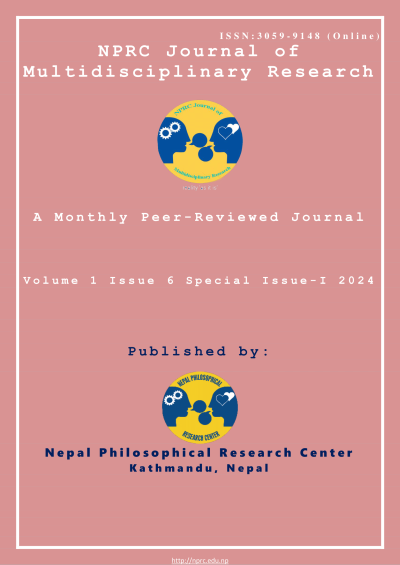An In-Depth Analysis of Macroeconomic Factors Influencing Nepal's Economic Growth
DOI:
https://doi.org/10.3126/nprcjmr.v1i6.71739Keywords:
Economic growth, Nepal, gross fixed capital formation, net export, total expenditure, macroeconomic determinants, OLS regressionAbstract
Background: Nepal, a low-income South Asian country, faces significant challenges in achieving sustainable economic growth. Various macroeconomic determinants such as inflation, government expenditure, foreign direct investment, and net exports play critical roles in shaping its economic trajectory. Despite global research on growth determinants, limited studies focus on Nepal’s context, particularly over the long term.
Objective: This study investigates the impact of key macroeconomic determinants—gross fixed capital formation (GFCF), net export (NE), and total expenditure (TE)—on Nepal’s real gross domestic product (RGDP) from 1980 to 2022.
Methods: Using time-series data from credible sources like the World Bank and IMF, the research employs an Ordinary Least Squares (OLS) regression model. Diagnostic tests including heteroscedasticity, serial correlation, and normality assessments ensure model reliability.
Findings: Gross fixed capital formation significantly positively affects economic growth, while net exports show a negligible and negative relationship with RGDP. Total expenditure positively influences growth, though with modest significance. Diagnostic tests confirm the robustness of the model, with R-squared values indicating high explanatory power.
Conclusion: Investments in capital formation drive economic growth in Nepal, while high import-export imbalances and recurrent expenditure hinder progress. The study recommends policy adjustments to enhance trade competitiveness and efficient resource allocation.
Novelty: This study provides a comprehensive analysis of Nepal’s economic growth determinants over a four-decade period, bridging research gaps with its detailed econometric approach.
Downloads
Downloads
Published
How to Cite
Issue
Section
License
Copyright (c) 2024 The Author(s)

This work is licensed under a Creative Commons Attribution-NonCommercial 4.0 International License.
This license enables reusers to distribute, remix, adapt, and build upon the material in any medium or format for noncommercial purposes only, and only so long as attribution is given to the creator.





